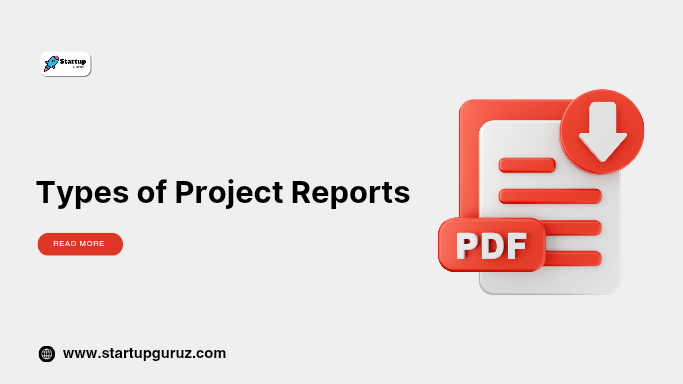Types of Project Reports
Types of Project Reports: A Comprehensive Guide
Project reports are essential documents that provide detailed information about a project’s objectives, progress, challenges, and outcomes. They serve as critical tools for communication, decision-making, and project evaluation across various industries. Understanding the different types of project reports is crucial for effective project management and successful outcomes.
This guide will delve into the types of project reports, their formats, applications, and best practices for creating them.

What Is a Project Report?
A project report is a structured document that provides insights into the progress, performance, and potential risks associated with a project. It is used by stakeholders to evaluate the feasibility, status, and outcomes of a project.
Importance of Project Reports
- Documentation: Ensures that all project details are recorded systematically.
- Decision-Making: Assists stakeholders in making informed decisions.
- Performance Monitoring: Tracks progress and identifies areas for improvement.
- Transparency: Builds trust among stakeholders by providing clear and accurate information.
Types of Project Reports
1. Feasibility Report
A feasibility report evaluates whether a project is viable in terms of technical, financial, and operational aspects.
Key Elements:
- Project objectives.
- Market analysis.
- Financial projections.
- Risk assessment.
Example: A feasibility report for a solar power plant would analyze energy demand, installation costs, and potential return on investment.
2. Progress Report
A progress report outlines the current status of a project, highlighting achievements, challenges, and next steps.
Key Elements:
- Tasks completed.
- Upcoming milestones.
- Resource utilization.
Example: Weekly progress reports for a construction project track the completion of each phase.
3. Financial Report
This type of report provides a detailed account of a project’s financial performance, including expenses, revenues, and profitability.
Key Elements:
- Budget allocation.
- Cost analysis.
- Financial risks.
Example: A financial report for a retail startup might include a profit-and-loss statement and cash flow analysis.
4. Technical Report
A technical report focuses on the technical aspects of a project, including methodologies, tools, and results.
Key Elements:
- Technical specifications.
- Testing outcomes.
- Process improvements.
Example: A software development project may produce a technical report detailing coding standards and system architecture.
5. Completion Report
A completion report is submitted after a project is finished, summarizing the outcomes and lessons learned.
Key Elements:
- Project achievements.
- Challenges faced.
- Recommendations for future projects.
Example: After completing a community development initiative, a completion report may highlight the number of beneficiaries and impact metrics.
6. Risk Assessment Report
This report identifies potential risks and suggests mitigation strategies to ensure project success.
Key Elements:
- Risk identification.
- Likelihood and impact analysis.
- Mitigation strategies.
Example: A risk assessment report for a manufacturing unit might address supply chain disruptions.
7. Status Report
A status report provides an overview of the project’s progress within a specific timeframe.
Key Elements:
- Current project phase.
- Key achievements.
- Upcoming tasks.
Example: A status report for a marketing campaign could include performance metrics like reach and engagement rates.
8. Business Plan Report
A business plan report outlines a project proposal, focusing on its business aspects.
Key Elements:
- Market opportunity.
- Revenue model.
- Financial forecasts.
Example: Entrepreneurs often submit business plan reports to secure funding from investors.
9. Annual Report
An annual report provides a comprehensive summary of a project’s performance over the year.
Key Elements:
- Achievements.
- Financial summary.
- Future goals.
Example: NGOs publish annual reports to showcase their activities and attract donors.
10. Incident Report
An incident report documents unexpected events that may impact the project.
Key Elements:
- Event description.
- Impact analysis.
- Corrective actions.
Example: In a construction project, an incident report might address a safety violation.
How to Choose the Right Type of Project Report
- Define the Objective: Understand the purpose of the report.
- Identify the Audience: Consider the needs of stakeholders.
- Determine the Format: Use templates for consistency.
- Focus on Key Metrics: Highlight relevant data points.
Steps to Create an Effective Project Report
- Understand the Requirements: Gather all necessary information.
- Structure the Report: Use headings and subheadings for clarity.
- Incorporate Visuals: Use charts and graphs to present data.
- Review and Edit: Ensure accuracy and readability.
Best Practices for Writing Project Reports
- Keep It Concise: Avoid unnecessary details.
- Use Simple Language: Make the report easy to understand.
- Focus on Facts: Base your report on data and evidence.
- Update Regularly: Ensure the information is up-to-date.
FAQs About Types of Project Reports
1. What are the main types of project reports?
The main types include feasibility, progress, financial, technical, completion, and risk assessment reports.
2. Why is a feasibility report important?
It determines whether a project is viable before initiation.
3. What is included in a progress report?
Progress reports highlight completed tasks, upcoming milestones, and challenges.
4. How does a financial report differ from a technical report?
A financial report focuses on costs and revenues, while a technical report details methodologies and technical outcomes.
5. When is a completion report prepared?
A completion report is prepared after the project concludes to summarize its achievements and challenges.
6. What is the purpose of a risk assessment report?
It identifies potential risks and provides mitigation strategies to ensure project success.
7. How often should status reports be submitted?
Status reports are typically submitted weekly or monthly, depending on the project requirements.
8. Can one project require multiple types of reports?
Yes, a single project can require various reports at different stages.
9. What tools can be used to create project reports?
Tools like Microsoft Word, Excel, and project management software can be used to create project reports.
10. Are templates available for different types of project reports?
Yes, there are templates for all major project report types, available online and in project management tools.